Blog
NGC 488 is a face-on spiral galaxy in the constellation Pisces. It is at a distance of about 90 million light-years away from Earth. Its diameter is estimated to be 52,6 Kpc (171.000 ly). The galaxy has a large central bulge, and is considered a prototype galaxy with multiple spiral arms. Its arms are tightly wound. Star forming activity has been traced within the arms. The nucleus of NGC 488 has been found to be chemically decoupled, being twice as metal rich as the central bulge of the galaxy. NGC 488, with the exception of its smaller companions, that form NGC 488 group, is an isolated galaxy.
The galaxy was discovered by William Herschel on 13 December 1784. Two supernovae have been observed in NGC 488, SN 2010eb, possibly Ia with peak magnitude 14.7, and SN 1976G, with magnitude 15.
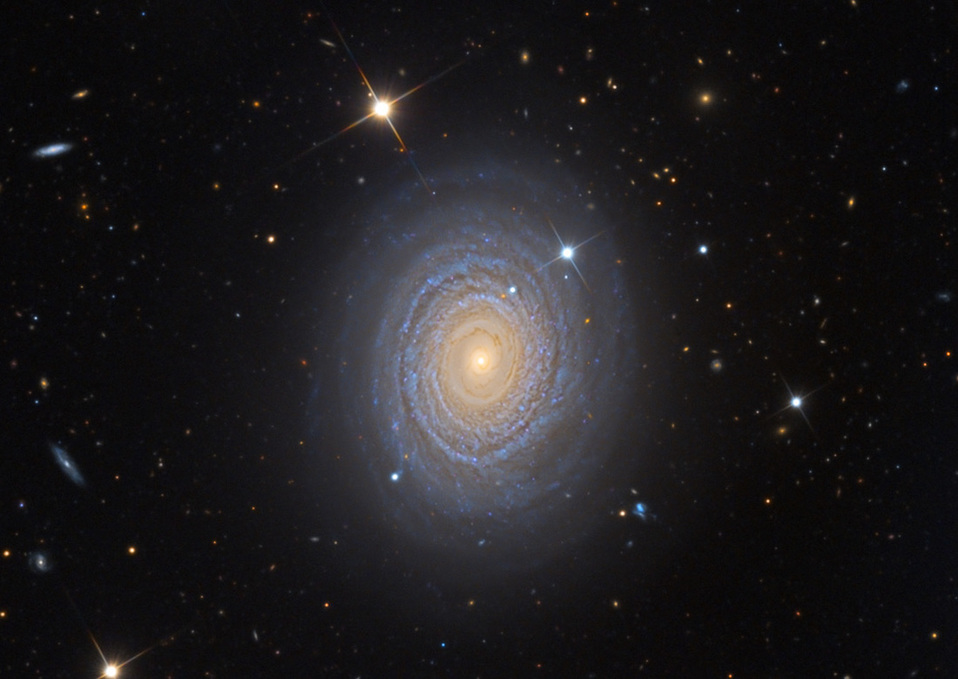
Michael Joseph Jackson (August 29, 1958 – June 25, 2009) was an American singer, songwriter, and dancer. Dubbed the “King of Pop“, he is regarded as one of the most significant cultural figures of the 20th century. Through stage and video performances, he popularized complicated dance techniques such as the moonwalk, to which he gave the name. His sound and style have influenced artists of various genres, and his contributions to music, dance, and fashion, along with his publicized personal life, made him a global figure in popular culture for over four decades. Jackson is the most awarded artist in the history of popular music.
The eighth child of the Jackson family, Jackson made his professional debut in 1964 with his elder brothers Jackie, Tito, Jermaine, and Marlon as a member of the Jackson 5. Jackson began his solo career in 1971 while at Motown Records, and rose to solo stardom with his fifth studio album Off the Wall (1979) during the peak of the disco era. By the early 1980s, Jackson became a dominant figure in popular music. His music videos, including those for “Beat It“, “Billie Jean“, and “Thriller” from his sixth studio album Thriller (1982), are credited with breaking racial barriers and transforming the medium into an art form and promotional tool. Jackson’s prominence propelled him and the television channel MTV into cultural phenomenons of 1980s pop culture. At the 1984 Grammy Awards, Thriller won a record-breaking eight Grammy Awards, including Album of the Year. Jackson continued to innovate with videos on the global best-seller albums Bad (1987), Dangerous (1991) and HIStory: Past, Present and Future, Book I(1995).
Starting in the late 1980s, Jackson became a figure of controversy and speculation due to his changing appearance, relationships, behavior and lifestyle. In 1993, he was accused of sexually abusing the child of a family friend. The lawsuit was settled out of court, and Jackson was not indicted. In 2005, he was tried and acquitted of further child sexual abuse allegations and several other charges. In 2009, while preparing for a series of comeback concerts, This Is It, Jackson died from an overdose of propofol administered by his personal physician, Conrad Murray. Fans around the world expressed their grief, and Jackson’s public memorial service was broadcast live. In August 2009, the Los Angeles County Coroner ruled that Jackson’s death was a homicide, and Murray was convicted of involuntary manslaughter in November 2011. Seven years later, the documentary Leaving Neverland, which detailed posthumous allegations of child sexual abuse, led to another media backlash against Jackson.
Jackson is one of the best-selling music artists of all time, with estimated sales of over 350 million records worldwide. Thriller is the best-selling album of all time, with estimated sales of 66 million copies worldwide. In addition, the remix album Blood on the Dance Floor: HIStory in the Mix (1997) is the best-selling remix album of all time. Bad was the first album to produce five Billboard Hot 100 number-one singles.[nb 2] Jackson had 13 BillboardHot 100 number-one singles, more than any other male artist in the Hot 100 era, and was also the first artist to have a top ten single in the BillboardHot 100 in five different decades. He received 13 Grammy Awards, the Grammy Legend and Grammy Lifetime Achievement awards, 6 Brit Awards, a Golden Globe Award, and 39 Guinness World Records, including the “Most Successful Entertainer of All Time”. Jackson’s inductions include the Rock and Roll Hall of Fame twice, the Vocal Group Hall of Fame, the Songwriters Hall of Fame, the Dance Hall of Fame (the only recording artist to be inducted), and the Rhythm and Blues Music Hall of Fame. In 2016, his estate earned $825 million, the highest yearly amount for a celebrity ever recorded by Forbes.
more...Bennie Maupin (born August 29, 1940, Detroit, Michigan) is a jazz multireedist who performs on various saxophones, flute, and bass clarinet.
He is known for his participation in Herbie Hancock‘s Mwandishi sextet and Headhunters band, and for performing on Miles Davis‘s seminal fusionrecord, Bitches Brew. Maupin has collaborated with Horace Silver, Roy Haynes, Woody Shaw, Lee Morgan and many others. He has performed on several Meat Beat Manifesto albums. He is noted for having a harmonically-advanced, “out” improvisation style, while having a different sense of melodic direction than other “out” jazz musicians such as Eric Dolphy.
Maupin was a member of Almanac, a group with Cecil McBee (bass), Mike Nock (piano) and Eddie Marshall (drums).
https://www.youtube.com/watch?v=KKGBLjjy-hQ
more...Dinah Washington (born Ruth Lee Jones; August 29, 1924 – December 14, 1963) was an American singer and pianist, who has been cited as “the most popular black female recording artist of the ’50s”. Primarily a jazz vocalist, she performed and recorded in a wide variety of styles including blues, R&B, and traditional pop music, and gave herself the title of “Queen of the Blues”. She was a 1986 inductee of the Alabama Jazz Hall of Fame, and was inducted into the Rock and Roll Hall of Fame in 1993.
Ruth Lee Jones was born in Tuscaloosa, Alabama to Alice and Ollie Jones, and moved to Chicago as a child. She became deeply involved in gospel and played piano for the choir in St. Luke’s Baptist Church while still in elementary school. She sang gospel music in church and played piano, directing her church choir in her teens and being a member of the Sallie Martin Gospel Singers. When she joined the Sallie Martin group, she dropped out of Wendell Phillips High School. She sang lead with the first female gospel singers formed by Sallie Martin, who was co-founder of the Gospel Singers Convention. Her involvement with the gospel choir occurred after she won an amateur contest at Chicago’s Regal Theater where she sang “I Can’t Face the Music”.
more...Charles “Charlie” Parker Jr. (August 29, 1920 – March 12, 1955), nicknamed “Bird” and “Yardbird”, was an American jazz saxophonist and composer. Parker was a highly influential soloist and leading figure in the development of bebop, a form of jazz characterized by fast tempos, virtuosic technique, and advanced harmonies. Parker was a blazingly fast virtuoso and introduced revolutionary harmonic ideas into jazz, including rapid passing chords, new variants of altered chords, and chord substitutions. Primarily a player of the alto saxophone, Bird’s tone ranged from clean and penetrating to sweet and somber.
Parker acquired the nickname “Yardbird” early in his career on the road with Jay McShann. This, and the shortened form “Bird”, continued to be used for the rest of his life, inspiring the titles of a number of Parker compositions, such as “Yardbird Suite“, “Ornithology“, “Bird Gets the Worm”, and “Bird of Paradise”. Parker was an icon for the hipster subculture and later the Beat Generation, personifying the jazz musician as an uncompromising artist and intellectual rather than just an entertainer.
Charlie Parker Jr. was born in Kansas City, Kansas at 852 Freeman Avenue, and raised in Kansas City, Missouri near Westport and later – in high school – near 15th and Olive Street. He was the only child of Charles Parker and Adelaide “Addie” Bailey, who was of mixed Choctaw and African American background. He attended Lincoln High School in September 1934, but withdrew in December 1935, just before joining the local musicians’ union and choosing to pursue his musical career full-time. His childhood sweetheart and future wife, Rebecca Ruffin, graduated from Lincoln High School in June 1935.
Parker began playing the saxophone at age 11, and at age 14 he joined his high school band where he studied under Bandmaster Alonzo Lewis. His mother purchased a new alto saxophone around the same time. His father, Charles Sr., was often required to travel for work, but provided some musical influence because he was a pianist, dancer and singer on the Theater Owners Booking Association (T.O.B.A.) circuit. He later became a Pullman waiter or chef on the railways. Parker’s mother Addie worked nights at the local Western Union office. His biggest influence at that time was a young trombone player named Robert Simpson, who taught him the basics of improvisation.
https://www.youtube.com/watch?v=UWAK4j_rMw0
more...My Beautiful daughter Maya; daughter, mother, wife, sister and Psychologist. Born on the banks of the Mississippi the year the Twins won the World Series!
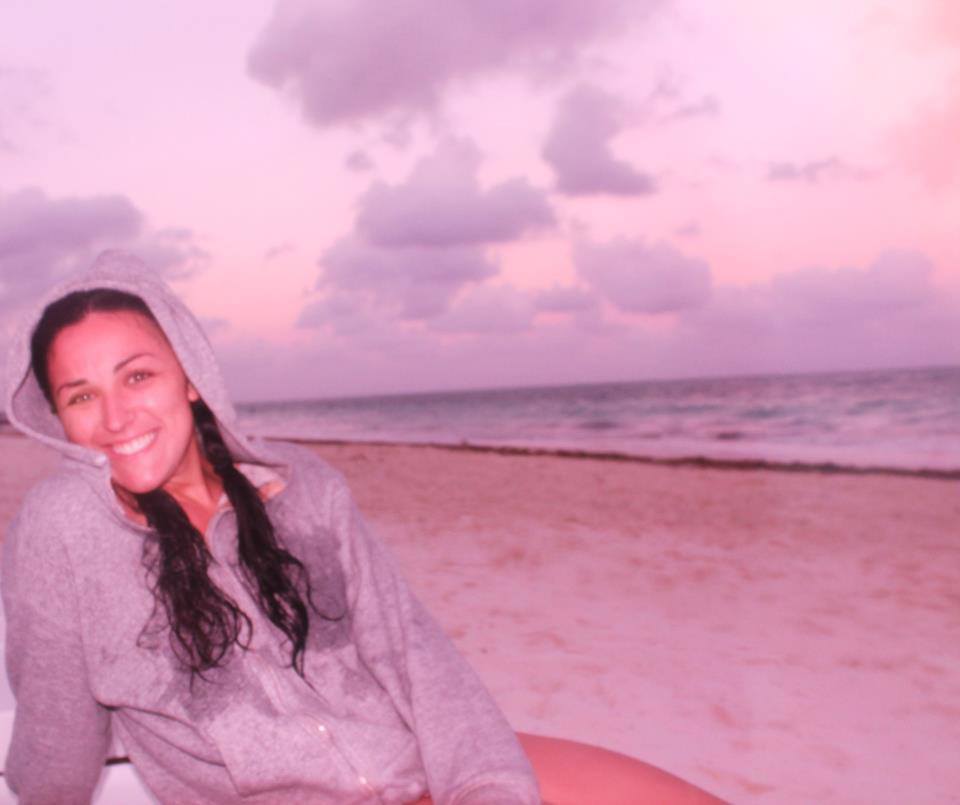
The Orion Nebula is a visualization based on astronomical data and movie rendering techniques. Up close and personal with a famous stellar nursery normally seen from 1,500 light-years away, the digitally modeled frame transitions from a visible light representation based on Hubble data on the left to infrared data from the Spitzer Space Telescope on the right. The perspective at the center looks along a valley over a light-year wide, in the wall of the region’s giant molecular cloud. Orion’s valley ends in a cavity carved by the energetic winds and radiation of the massive central stars of the Trapezium star cluster. The single frame is part of a multiwavelength, three-dimensional video that lets the viewer experience an immersive, three minute flight through the Great Nebula of Orion.
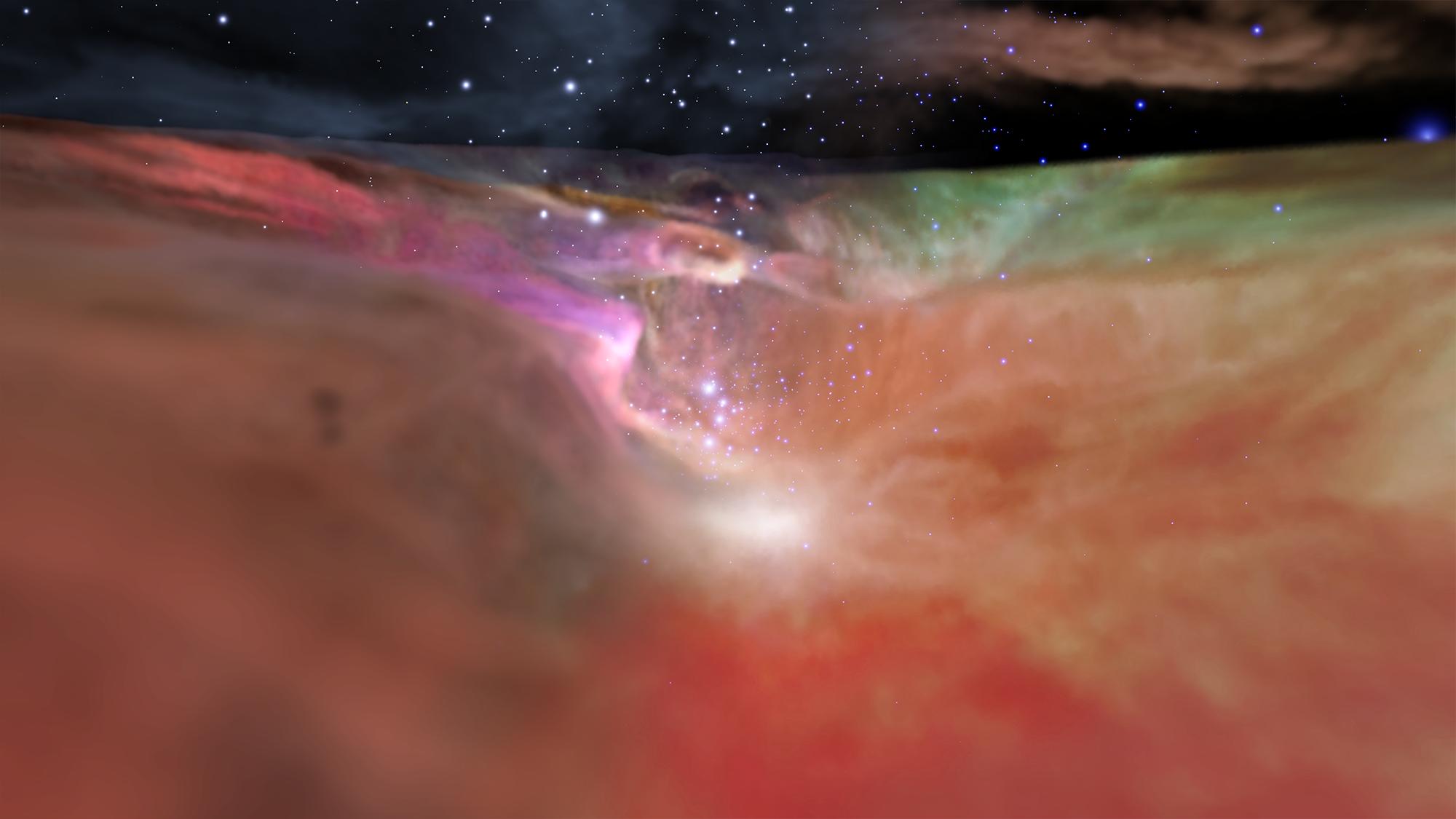
Daniel Peter Seraphine (born August 28, 1948) is an American drummer, record producer, theatrical producer and film producer. He is best known as the original drummer and founding member of the rock band Chicago, a tenure which lasted from February 1967 to May 1990.
Daniel Peter Seraphine was born in Chicago to John and Mary Seraphine. The family lived in the Dunning neighborhood on Chicago’s northwest side. He started playing drums at the age of nine while attending St. Priscilla Catholic grade school. When he was 15 years old, Seraphine withdrew from Steinmetz High School. Outside of school he joined a local gang called the JPs.
In December 1965, after deciding to quit as a professional drummer, he was invited to join Jimmy Ford and the Executives, Dick Clark’s road band. Already in the band were Terry Kath on bass and Walter Parazaider on saxophone. After being let go from Jimmy Ford and the Executives when it merged with another local band, Little Artie and the Pharaohs (under the new name, The Mob) the three of them were invited to join a cover band called The Missing Links.
more...
Kenneth Sidney “Kenny” Drew (August 28, 1928 – August 4, 1993) was an American jazz pianist.
Drew was born in New York City in 1928 and received piano lessons from the age of five. He attended the High School of Music & Art in Manhattan. Drew’s first recording, in 1950, was with Howard McGhee, and over the next two years he worked in bands led by Buddy DeFranco, Coleman Hawkins, Lester Young, and Charlie Parker, among others. After a brief period with his own trio in California, Drew returned to New York, playing with Dinah Washington, Johnny Griffin, Buddy Rich, and several others over the following few years. He led many recording sessions throughout the ’50s, and in 1957 appeared on John Coltrane‘s album Blue Train.
Drew was one of several American jazz musicians who settled in Europe around this period: he moved to Paris in 1961 and to Copenhagen three years later. While he sacrificed much of the interest of the American jazz audience, he gained a wide following across Europe. Kenny Drew was a well-known figure on the Copenhagen jazz scene, recording many sessions with the Danish bassist Niels-Henning Ørsted Pedersen. “Living in Copenhagen, and travelling out from there,” Drew remarked, “I have probably worked in more different contexts than if I had stayed in New York where I might have got musically locked in with a set-group of musicians. This way, I have been able to keep my musical antennas in shape, while at the same time I have had more time to study and also get deeper into my own endeavors.
more...Philip William Seamen (28 August 1926 – 13 October 1972) was an English jazz drummer.
With a background in big band music, Seamen played and recorded in a wide range of musical contexts with virtually every key figure of 1950s and 1960s British jazz. Notable examples included Joe Harriott, Tubby Hayes, Stan Tracey, Ronnie Scott, Denny Termer, Dick Morrissey, Harold McNair, Don Rendell, Victor Feldman, Dizzy Reece, Tony Coe, Tony Lee, and George Chisholm, among others. Later in his career he worked with Alexis Korner and Georgie Fame, and had a spell with Ginger Baker’s Air Force, the leader of the band being Seamen’s foremost disciple. Addiction to alcohol and other drugs hampered his career.
more...Ustad Vilayat Khan (28 August 1928 – 13 March 2004) was an Indian classical sitar player. Along with Imdad Khan, Enayat Khan, and Imrat Khan, he is credited with the creation and development of gayaki ang (an attempt to mimic vocal music) on the sitar. He recorded his first 78-RPM disc at the age of 8, and gave his last concert in 2004 at the age of 75.
more...Soléa develops in (altered) Phrygian mode “por arriba” (fundamental on the 6th string), with the III degree of the mode altered to a major 3rd when resolving to I.
To adapt to the singer’s vocal range, guitarists can use a “cejilla” (capo) to play in any key while preserving the known chord positions. Modern guitarists often play soleá using other chord positions or even changing the tuning of the guitar to experiment with new sounds, especially in solo instrumental pieces.
The typical flamenco progression iv, III, II, I (an altered Phrygian cadence) is heard several times during the development of the song. In E altered Phrygian, the progression would be Am, G, F, E (the E chord should be Em in a diatonic Phrygian cadence, but its diatonic third – G – is altered to a G♯).
A usual progression with a four-line stanza is the following:
- first line: E7, Am,
- transition to 2nd line: Am, G, (or F, G)
- 2nd line: F, E
- 3rd line: G7, C (or C7)
- 4th line: Am, G, F, E, F, E
And a usual progression with a three-line stanza:
- first line: E7, Am
- 2nd line: G7, C
- 3rd line: Am, G, F, E, F, Ehttps://www.youtube.com/watch?v=URgD-mXkjGs
Since the start of the pandemic in March 2020 this is the first RRW @
the Wilder Community Center for Aging 650 Marshall Ave St Paul, MN 55104 from 1030am-noon
in the courtyard. Exploring world rhythms with instruments provided.
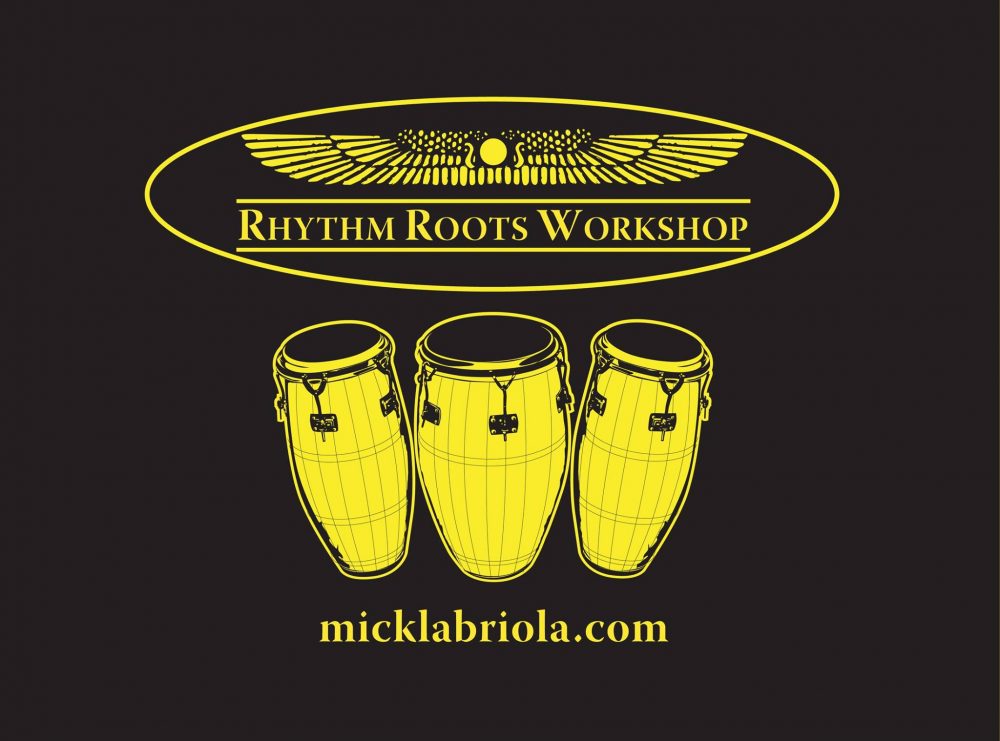
more...
https://www.youtube.com/watch?v=ywgtKjvG2Sk&t=43s
more...features a peculiar system of galaxies cataloged as Arp 227 some 100 million light-years distant. Swimming within the boundaries of the constellation Pisces, Arp 227 consists of the two galaxies prominent right of center, the curious shell galaxy NGC 474 and its blue, spiral-armed neighbor NGC 470. The faint, wide arcs or shells of NGC 474 could have been formed by a gravitational encounter with neighbor NGC 470. Alternately the shells could be caused by a merger with a smaller galaxy producing an effect analogous to ripples across the surface of a pond. The large galaxy on the top lefthand side of the deep image, NGC 467, appears to be surrounded by faint shells too, evidence of another interacting galaxy system. Intriguing background galaxies are scattered around the field that also includes spiky foreground stars. Of course, those stars lie well within our own Milky Way Galaxy. The field of view spans 25 arc minutes or about 1/2 degree on the sky.
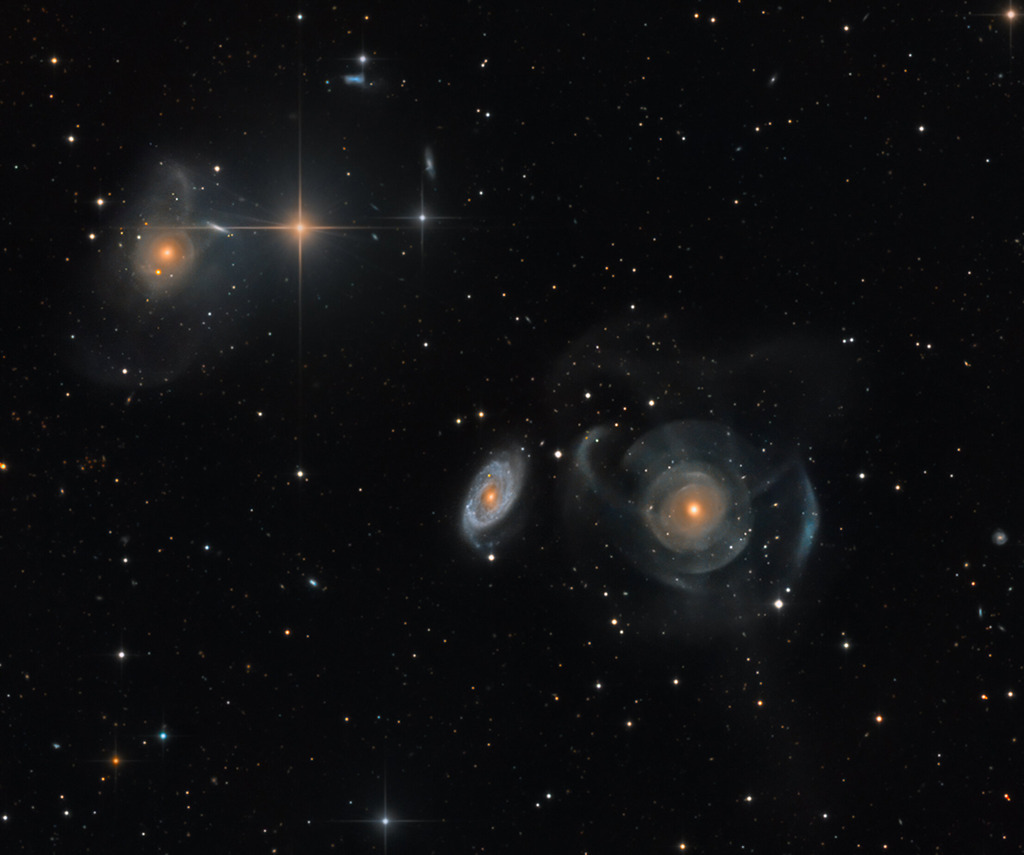
Anthony John Kronenberg (27 August 1925 – 18 October 1999), known professionally as Tony Crombie, was an English jazz drummer, pianist, bandleader, and composer. He was regarded as one of the finest English jazz drummers and bandleaders, occasional but capable pianist and vibraphonist, and an energizing influence on the British jazz scene over six decades.
Crombie was a self-taught musician who began playing the drums at the age of fourteen. He was one of a group of young men from the East End of London who ultimately formed the co-operative Club Eleven, bringing modern jazz to Britain. Having gone to New York with his friend Ronnie Scott in 1947, witnessing the playing of Charlie Parker and Dizzy Gillespie, he and like-minded musicians such as Johnny Dankworth, Scott and Dennis Rose, brought be-bop to the UK. This group of musicians were the ones called upon if and when modern jazz gigs were available. In 1948 Crombie toured Britain and Europe with Duke Ellington, who had been unable to bring his own musicians with him, except for Ray Nance and Kay Davis. Picking up a rhythm section in London, he chose Crombie on the recommendation of Lena Horne, with whom Crombie had worked when she appeared at the Palladium.
In August 1956, Crombie set up a rock and roll band he called The Rockets, which included future Shadows bassist Jet Harris. The group was modelled after Bill Haley‘s Comets and Freddie Bell & the Bellboys. Crombie and his Rockets released several singles for Decca and Columbia, including “Teach You to Rock” produced by Norrie Paramor, which made the Top 30 in the UK Singles Chart in October 1956.
He is credited with introducing rock and roll music to Iceland, performing there in May 1957. By 1958 the Rockets had become a jazz group with Scott and Tubby Hayes. During the following year Crombie started Jazz Inc. with pianist Stan Tracey. In 1960, he composed the score for the film The Tell-Tale Heart and established residency at a hotel in Monte Carlo. In May 1960 he toured the UK with Conway Twitty, Freddy Cannon, Johnny Preston, and Wee Willie Harris.
In the early sixties Crombie’s friend and contemporary, Victor Feldman, passed one of his compositions to Miles Davis, who recorded the piece on his album Seven Steps to Heaven. The song, “So Near, So Far”, has been recorded by a number of other players including Joe Henderson, who named a tribute album to Miles Davis using the title.
During the next thirty years Crombie appeared with many of the greatest American jazz musicians, including Ben Webster, Coleman Hawkins, Illinois Jacquet, Joe Pass, Mark Murphy and Eddie “Lockjaw” Davis. In the mid-1990s, after breaking his arm in a fall, he stopped playing the drums but continued composing until his death in 1999.
more...
More Posts
- Cosmos TMC1
- David Lindley
- Otis Spann
- Son House
- World Drumming Babatunde Olatunji
- Daily Roots Scientist
- Happy Vernal/Spring Equinox 2023
- RHYTHM ROOTS WORKSHOP Lincoln Elementary Ivanhoe, MN
- Cosmos JW100
- Alphonso Martin
- Lee Scratch Perry
- Harold Mabern
- Marian McPartland
- Sister Rosetta Tharpe
- World Drumming Babatunde Olatunji
- Daily Roots Scientist
- Cosmos NGC 1365
- Clarence Frogman Henry
- Buster Bennett
- Lennie Tristano